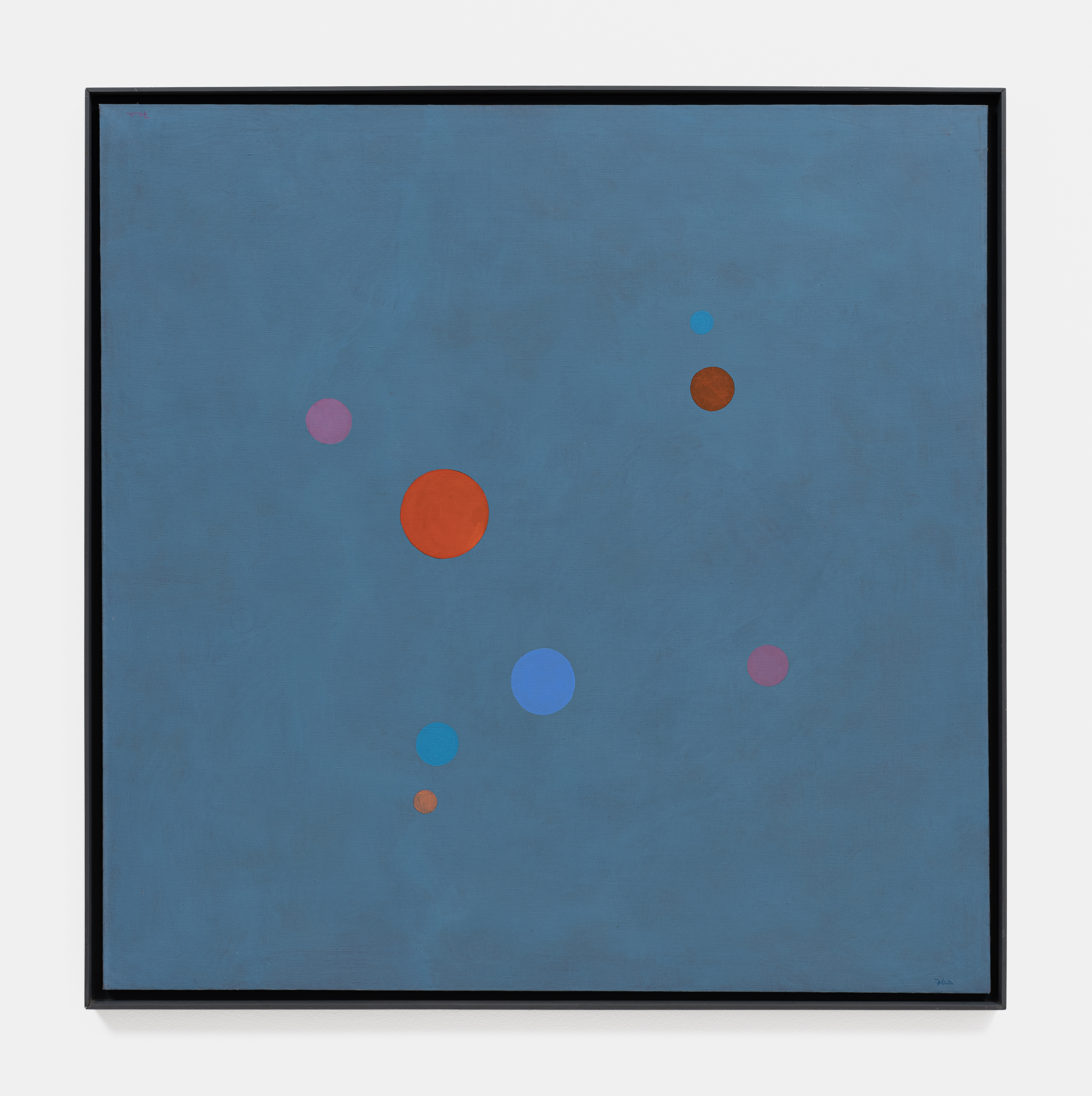Leroy W. Flint
(Ashtabula, OH, Ohio, 1909 - 1991, Akron, Ohio)
Constellation of Hot and Cold Suns
1966
Acrylic on canvas
48 x 48 in. (121.9 x 121.9 cm)
Collection of the Akron Art Museum
Gift of Theresa Bedoya
2021.28
More Information
Leroy Flint created this painting in 1966, exhibited it in a faculty show at Kent State University, and from there gifted it to his student Timothy App when App mentioned his admiration for the work. Flint ran the art gallery at KSU, and App worked as a gallery assistant there alongside fellow artist John Sokol. App recalls having eagerly anticipated the faculty show as an opportunity to see what Flint, a venerated master at the school and “the most urbane person I’ve ever met,” could do when left to his own devices. Constellation of Hot and Cold Suns could be described as a deceptively simple painting, or perhaps just as a simple painting. The picture consists of eight evenly-painted circles of different colors and sizes arrayed across an atmospheric blue background. The title’s reference to temperature fits, as the hues of these floating discs range from hotter red and orange to colder blue, with a purplish pink lying somewhere in between. The word “Constellation” also applies, as the rounded forms are clustered towards the center of the canvas. Also applicable is Terry Turner’s description of Flint’s work which appeared in the Akron Beacon Journal, albeit just over a decade before the artist painted this work: “His own paintings are in a modified expressionistic manner which makes little rational sense to the untrained eye but nevertheless communicate a certain undefined sense of warm, poetic dreaminess. The viewer who is unable to fully interpret Roy’s work is still drawn to it and finds it appealing.” In this straightforward way, a viewer can appreciate Constellation of Hot and Cold Suns for its pleasantly controlled range of color and its gentle mood. At a greater level of complication, the painting could be likened to a color study by Josef Albers, in which relationships of composition and color suggest vacillating spatial arrangements—a vast background expanse, and discs receding or advancing depending upon their size, brightness, and visual exchanges with one another. These relationships can be further shuffled by following Flint’s suggestion (indicated on the backside of the canvas) that the painting can be hung in two different, opposite orientations. Knowing viewers might also ponder historical relationships and wonder if Flint made this work in response to contemporaneous efforts in abstraction by painters like Adolph Gottlieb, who experimented with similarly spare compositions with circles as early as 1959.
Keywords
Geometric shapesSpace
Geometric
Sun
Abstract art
Color

